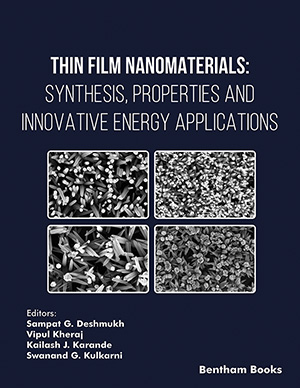
Abstract
Today, liposomes are among the most applied technologies for the encapsulation and delivery of bioactive agents and many different compounds in biological, pharmaceutical, medical and nutritional research. In this review, classification of liposomal vesicles, methods of their preparation and encapsulation, as well as their applications in food, cosmetics and pharmaceutical industries are reviewed. In addition, the main analytical approaches used to study liposome characteristics such as size, transition temperature, surface charge, fluidity, lamellarity, stability and encapsulation efficiency are presented. In the final part of the article, mechanisms of liposome targeting are discussed.
Keywords: Liposome composition, liposome production, oxidative stabilization, encapsulation efficiency, liposome targeting, release mechanisms, liposome characterization, liposome stability, transition temperature, passive trapping, active trapping
Current Nanoscience
Title: Liposomes: A Review of Manufacturing Techniques and Targeting Strategies
Volume: 7 Issue: 3
Author(s): B. Maherani, E. Arab-Tehrany, M. R. Mozafari, C. Gaiani and M. Linder
Affiliation:
Keywords: Liposome composition, liposome production, oxidative stabilization, encapsulation efficiency, liposome targeting, release mechanisms, liposome characterization, liposome stability, transition temperature, passive trapping, active trapping
Abstract: Today, liposomes are among the most applied technologies for the encapsulation and delivery of bioactive agents and many different compounds in biological, pharmaceutical, medical and nutritional research. In this review, classification of liposomal vesicles, methods of their preparation and encapsulation, as well as their applications in food, cosmetics and pharmaceutical industries are reviewed. In addition, the main analytical approaches used to study liposome characteristics such as size, transition temperature, surface charge, fluidity, lamellarity, stability and encapsulation efficiency are presented. In the final part of the article, mechanisms of liposome targeting are discussed.
Export Options
About this article
Cite this article as:
Maherani B., Arab-Tehrany E., R. Mozafari M., Gaiani C. and Linder M., Liposomes: A Review of Manufacturing Techniques and Targeting Strategies, Current Nanoscience 2011; 7 (3) . https://dx.doi.org/10.2174/157341311795542453
| DOI https://dx.doi.org/10.2174/157341311795542453 |
Print ISSN 1573-4137 |
| Publisher Name Bentham Science Publisher |
Online ISSN 1875-6786 |
Call for Papers in Thematic Issues
Advanced Inorganic Nanocomposites and their Emerging Applications
This special issue will highlight developments in the recent trends in the synthesis of metal oxides, nanoclusters, biomaterials, 2D nanomaterials, nanocrystals, nanocomposites, etc., and their applications in electrochemical systems, tissue regeneration, energy storage and harvesting, sensors, etc. The novelty of the methods in the chemical synthesis, as well as their ...read more
Advanced Nanotechnology in Forensic Science: Revolutionizing Fingerprint Identification and Crime Scene Analysis
This special issue aims to provide a comprehensive exploration of the innovative fusion between nanotechnology and forensic science. It aspires to bridge the gap between traditional investigative techniques and cutting-edge nanoscale applications, envisioning a paradigm shift in forensic analysis. By compiling the expertise of multidisciplinary experts, the book's objectives include ...read more
Graphene and 2D Materials for Energy Storage and Conversion.
This thematic issue will discuss the recent advances in graphene-based nanomaterials for different energy technologies. Graphene possesses a high surface area, and stable structure and exhibits many interesting electronic, optical, and mechanical properties due to its 2D crystal structure. Graphene is of both fundamental interest and suitable for a wide ...read more
Nanopathology; A Promising Approach for Targeted Cancer Treatment
Cancer is the most challenging diseases in treatment worldwide. Recently, the nanotechnology opened the gate for targeting the cancer as a promising therapy. The small size and exceptional properties of nanoparticles give it several advantages for easily targeting of cancerous cells. Furthermore, this advantage allows them to easily penetrate deeply ...read more
Related Journals
 93
93
- Author Guidelines
- Graphical Abstracts
- Fabricating and Stating False Information
- Research Misconduct
- Post Publication Discussions and Corrections
- Publishing Ethics and Rectitude
- Increase Visibility of Your Article
- Archiving Policies
- Peer Review Workflow
- Order Your Article Before Print
- Promote Your Article
- Manuscript Transfer Facility
- Editorial Policies
- Allegations from Whistleblowers
Related Articles
-
Human Chorionic Gonadotropin: A Model Molecule For Oligopeptide-Based Drug Discovery
Endocrine, Metabolic & Immune Disorders - Drug Targets Drug-Mediated Targeted Disruption of Multiple Protein Activities Through Functional Inhibition of the Hsp90 Chaperone Complex
Current Medicinal Chemistry Blockade of Insulin-Like Growth Factor Type-1 Receptor with Cixutumumab (IMC-A12): A Novel Approach to Treatment for Multiple Cancers
Current Drug Targets Microfilament Actin Remodeling as a Potential Target for Cancer Drug Development
Current Cancer Drug Targets Repurposing Disulfiram as An Anti-Cancer Agent: Updated Review on Literature and Patents
Recent Patents on Anti-Cancer Drug Discovery The Pathology Induced by Highly Active Antiretroviral Therapy Against Human Immunodeficiency Virus: an Update
Current Medicinal Chemistry (Iso)Flav(an)ones, Chalcones, Catechins, and Theaflavins as Anticarcinogens: Mechanisms, Anti-Multidrug Resistance and QSAR Studies
Current Medicinal Chemistry Nanomaterials of Natural Bioactive Compounds for Wound Healing: Novel Drug Delivery Approach
Current Drug Delivery Neurotrophic Factor Treatment After Spinal Root Avulsion Injury
Central Nervous System Agents in Medicinal Chemistry QSAR Models for Anti-Malarial Activity of 4-Aminoquinolines
Current Computer-Aided Drug Design Positron Emitting Tracers in Pre-Clinical Drug Development
Current Radiopharmaceuticals The Epidermal Growth Factor Receptor as a Therapeutic Target in Glioblastoma Multiforme and other Malignant Neoplasms
Anti-Cancer Agents in Medicinal Chemistry Receptor Tyrosine Kinases as Therapeutic Targets in Malignant Glioma
Reviews on Recent Clinical Trials An Overview of Immune Evasion Strategies of DNA and RNA Viruses
Infectious Disorders - Drug Targets The Clinical Impact of Quantitative Cell-free DNA, KRAS, and BRAF Mutations on Response to Anti-EGFR Treatment in Patients with Metastatic Colorectal Cancer
Current Pharmaceutical Design The p53-Estrogen Receptor Loop in Cancer
Current Molecular Medicine Current Advances in the Synthesis and Antitumoral Activity of SIRT1-2 Inhibitors by Modulation of p53 and Pro-Apoptotic Proteins
Current Medicinal Chemistry Gene Therapy to Overcome Drug Resistance in Cancer: Targeting Key Regulators of the Apoptotic Pathway
Current Gene Therapy Potential Crossreactivity of Human Immune Responses Against HCMV Glycoprotein B
Current Drug Discovery Technologies Efficacy of Pegylated Lyposomal Anthracyclines and of Intra-Arterial Carboplatin and Doxorubicin Combined with Local Hyperthermia in a Case of Malignant Endovascular Papillary Angioendothelioma
Current Drug Delivery






















